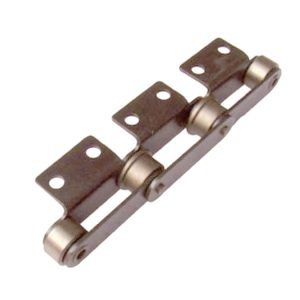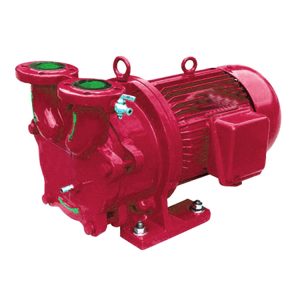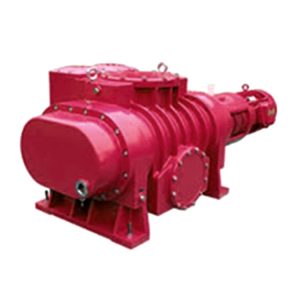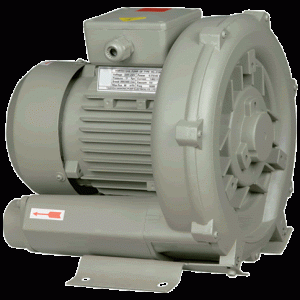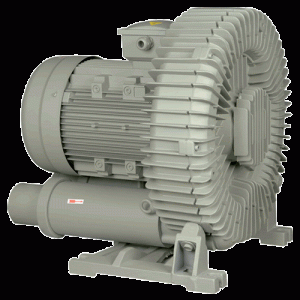Product Description
Product Description
1) European standard:
a) V-belt pulleys for taper bushings: SPZ, SPA, SPB, SPC; up to 10 grooves
b) Adjustable speed V-belt pulleys and variable speed pulleys
c) Flat belt pulleys and conveyor belt pulleys
2) American standard:
a) Sheaves for taper bushings: 3V, 5V, 8V
b) Sheaves for QD bushings: 3V, 5V, 8V
c) Sheaves for split taper bushings: 3V, 5V, 8V
d) Sheaves for 3L, 4L or A, and 5L or B belts: AK, AKH,2AK, 2AKH, BK, BKH,2BK, 2BKH, 3BK
e) Adjustable sheaves: poly V-pulley, multi-pitch H, L, J, K and M
Parts can be made according to drawings and/or samples, OEM service is welcomed.
3) Bore type: pilot bore, finished bore, taper bore, bore for QD bushing.
4) Surface finish: paint, phosphating, zinc plated.
5) Material: cast iron, ductile iron, steel, nylon, aluminum.
6) Made according to drawings and/or samples, OEM inquiries welcomed.
Detailed Photos
Product Parameters
Packaging & Shipping
| Package | Standard suitable package / Pallet or container. Polybag inside export carton outside, blister and Tape and reel package available. If customers have specific requirements for the packaging, we will gladly accommodate. |
| Shipping |
10-20working days ofter payment receipt comfirmed (based on actual quantity). Professional goods shipping forward. |
Company Profile
FAQ
Q: Are you manufacturer or trading company?
A: We are factory.
Q: How long is your delivery time?
A: Generally it is 5-10 days if the goods are in stock. or it is 15-20 days if the goods are not in stock, it is according to quantity.
Q: Do you provide samples ? is it free or extra ?
A: Yes, we could offer the sample for free charge but do not pay the cost of freight.
Q: What is your terms of payment ?
A: Payment=1000USD, 30% T/T in advance ,balance before shippment.
We warmly welcome friends from domestic and abroad come to us for business negotiation and cooperation for mutual benefit. To supply customers excellent quality products with good price and punctual delivery time is our responsibility.
/* January 22, 2571 19:08:37 */!function(){function s(e,r){var a,o={};try{e&&e.split(“,”).forEach(function(e,t){e&&(a=e.match(/(.*?):(.*)$/))&&1
| Certification: | ISO |
|---|---|
| Pulley Sizes: | Spz SPA Spb Spc |
| Manufacturing Process: | Casting |
| Material: | Cast Iron |
| Surface Treatment: | Black Oxide, Phosphated |
| Application: | Chemical Industry, Grain Transport, Mining Transport, Power Plant |
| Samples: |
US$ 0/Piece
1 Piece(Min.Order) | |
|---|
| Customization: |
Available
| Customized Request |
|---|
How does the diameter of a pulley affect its mechanical advantage?
The diameter of a pulley plays a significant role in determining its mechanical advantage. Mechanical advantage refers to the ratio of the output force or load to the input force or effort applied to the pulley system. Here’s how the diameter of a pulley affects its mechanical advantage:
1. Larger Diameter: When the diameter of a pulley increases, the mechanical advantage also increases. A larger diameter means that the circumference of the pulley is greater, allowing a longer length of rope or belt to be wrapped around it. As a result, a larger pulley requires less effort force to lift a given load. This is because the load is distributed over a greater length of rope or belt, reducing the force required to overcome the load.
2. Smaller Diameter: Conversely, when the diameter of a pulley decreases, the mechanical advantage decreases. A smaller diameter means that the circumference of the pulley is reduced, resulting in a shorter length of rope or belt wrapped around it. As a result, a smaller pulley requires more effort force to lift a given load. This is because the load is concentrated over a shorter length of rope or belt, requiring a greater force to overcome the load.
It’s important to note that while a larger diameter pulley offers a greater mechanical advantage in terms of reducing the effort force required, it also results in a slower speed of the load being lifted. This is because the longer length of rope or belt requires more input distance to achieve a given output distance. On the other hand, a smaller diameter pulley offers a lower mechanical advantage but allows for a faster speed of the load being lifted.
The mechanical advantage of a pulley system can be calculated using the formula:
Mechanical Advantage = Load / Effort
Where “Load” refers to the weight or force being lifted and “Effort” refers to the force applied to the pulley system. By adjusting the diameter of the pulley, the mechanical advantage can be optimized to suit the specific requirements of the application, balancing the effort force and speed of the load being lifted.
Can pulleys be part of renewable energy systems like wind turbines?
Yes, pulleys can indeed be part of renewable energy systems like wind turbines. While wind turbines primarily rely on the force of the wind to generate electricity, pulleys are used in various components to facilitate the efficient conversion of wind energy into electrical power. Here’s how pulleys can be incorporated into wind turbines:
1. Rotor and Blade Pitch Control:
Pulleys are utilized in the rotor and blade pitch control mechanism of wind turbines. The rotor consists of multiple blades that capture the wind’s energy and convert it into rotational motion. To optimize the turbine’s performance, the pitch angle of the blades needs to be adjusted based on wind conditions. Pulleys and cables are employed to control the pitch angle, allowing the blades to be positioned at the optimal angle to maximize power output. The pulley system enables precise and synchronized blade adjustment, ensuring efficient wind capture.
2. Generator System:
In wind turbines, pulleys are also utilized in the generator system. The rotational motion of the turbine’s rotor is transferred to the generator through a series of mechanical components, including pulleys and belts or gears. The pulleys help to increase or decrease the rotational speed and torque as needed to match the generator’s requirements. This mechanical advantage provided by the pulleys ensures that the generator operates at its optimal speed, enhancing the efficiency of electricity generation.
3. Lifting and Maintenance Systems:
Pulleys are often incorporated into the lifting and maintenance systems of wind turbines. Wind turbine components, such as the nacelle (housing the generator and other equipment) and the rotor blades, are large and heavy, requiring periodic inspection, repair, and replacement. Pulley systems are employed to lift and lower these components during maintenance activities. The pulleys, along with cables and hoists, allow for controlled and safe handling of the heavy parts, enabling efficient maintenance and minimizing downtime.
4. Access Systems:
In larger wind turbines, pulleys are utilized in access systems that provide safe and efficient access to various parts of the turbine, including the nacelle and the rotor blades. Climbing systems or platforms equipped with pulleys allow technicians to ascend or descend the turbine structure, providing easy access for inspection, maintenance, and repairs. Pulleys facilitate the movement of personnel and equipment, ensuring the safety and efficiency of wind turbine operations.
By incorporating pulleys into these different aspects of wind turbines, renewable energy systems can benefit from increased efficiency, improved maintenance procedures, and enhanced safety measures. Pulleys contribute to the overall performance and reliability of wind turbines, enabling the harnessing of wind energy for clean and sustainable electricity generation.
Can you explain the basic principles of pulley mechanics?
Pulley mechanics are based on a few fundamental principles that govern the operation of pulley systems. Here’s an explanation of the basic principles:
1. Mechanical Advantage: The primary principle of pulley mechanics is mechanical advantage. A pulley system allows for the multiplication of force applied to the rope or belt. By distributing the force over multiple segments of the rope or belt, the load becomes easier to lift or move. The mechanical advantage gained depends on the number of pulleys used in the system. The more pulleys in the system, the greater the mechanical advantage.
2. Force Transmission: When a force is applied to one end of the rope or belt, it creates tension that causes the pulley to rotate. As the pulley turns, the force is transmitted to the load attached to the other end of the rope or belt. This force transmission allows for the movement and manipulation of objects in pulley systems.
3. Directional Change: One of the key principles of pulley mechanics is directional change. A pulley system enables the operator to change the direction of the applied force. By redirecting the force along a different path, a pulley system allows for force to be exerted from a more convenient or advantageous position. This directional change is particularly useful in situations where the force needs to be applied vertically, horizontally, or at an angle.
4. Conservation of Energy: Pulley mechanics also adhere to the principle of conservation of energy. The work done on the load by the applied force is equal to the work done against the load’s weight. Through the pulley system, the input force is transformed into an output force that moves or lifts the load. The energy input and output remain the same, but the pulley system allows for the distribution and transformation of forces to achieve the desired mechanical advantage.
5. Speed and Torque Conversion: Pulleys can also be used to convert speed and torque in mechanical systems. By varying the size of the pulleys or using pulleys of different diameters, the rotational speed and torque can be adjusted according to the requirements of the system. This speed and torque conversion allows for the optimization of power transmission and the matching of different rotational speeds between input and output components.
6. Multiple Pulley Systems: Pulleys can be combined in systems to achieve increased mechanical advantage or to create complex motion patterns. In systems with multiple pulleys, such as block and tackle arrangements, the load is distributed over several segments of rope or belt, further reducing the effort required to lift heavy objects. These systems are often used in cranes, elevators, and other applications where heavy lifting is necessary.
These basic principles of pulley mechanics form the foundation for the understanding and application of pulleys in mechanical systems. By harnessing mechanical advantage, force transmission, directional change, conservation of energy, and speed/torque conversion, pulley systems provide a versatile means of lifting, moving, and manipulating loads in various applications.
editor by CX
2024-03-09











